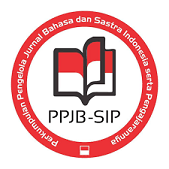PERTENTANGAN KELAS DALAM NOVEL BURUAN KARYA PUTU OKA SUKANTA: KAJIAN TEORI SASTRA MARXIS DAN KONTRIBUSINYA DALAM MEMPERKAYA SUMBER PENGAJARAN SEJARAH DI SEKOLAH MENENGAH ATAS
DOI:
https://doi.org/10.23887/jjpbs.v4i2.8075Abstract
Penelitian ini bertujuan mendeskripsikan pertentangan kelas dalam novel Buruan karya Putu Oka Sukanta melalui kajian teori sastra marxis beserta kontribusinya yang mampu diberikan dalam memperkaya pengajaran sejarah di sekolah menengah atas.Subjek penelitian adalah novel Buruan karya Putu Oka Sukanta.Pengumpulan data dalam penelitian ini menggunakan metode studi pustaka dan dokumentasi.Data yang diperoleh melalui beberapa tahap, yaitu (1) deskripsi data, (2) idetifikasi data, (3) klasifikasi data, (4) penyajian data, dan (5) penarikan simpulan.Hasil penelitian secara umum membuktikan bahwa pertama, pertentangan kelas yang terdapat dalam novel Buruan implisit melalui permasalahan yang dihadapi oleh buruh nelayan atas juragan perahu. Terdapat empat persoalan yang berkaitan dengan pertentangan kelas dalam novel Buruan menyangkut, (1) pertentangan kelas antara juragan perahu dan buruh nelayan, (2) eksploitasi buruh nelayan yang dilakukan oleh juragan perahu, (3) kesadaran kelas yag terjadi pada buruh nelayan, dan (4) perjuangan kelas yang dilakukan oleh buruh nelayan Tambaklorok untuk membebaskan diri dari penghisapan juragan pemilik perahu. Kedua, novel Buruan dapat dimanfaatkan dalam memperkaya pengajaran sejarah di sekolah menengah atas sebagai behan pengajaran untuk mengetahui materi marxisme di dalam suatu kehidupan sosial masyarakat secara lebih objektif.Kata Kunci : pertentangan kelas, novel Buruan, kajian teori sastra marxis, pembelajaran sejarah
This study aimed to describe the class conflict in the novel Buruan Putu Oka Sukanta work through the study of Marxist literary theory and its contribution can be given in enriching the teaching of history in secondary schools is a novel research atas. Subject Buruan works Putu Oka Sukanta. To data was collected in this research study method libraries and dokumentasi.Data obtained through several stages, namely (1) a description of the data, (2) data of identification (3) classification of data, (4) data presentation, and (5) conclusion. Result of general research proving that the first, class conflict contained in Buruan novel implicitly through labor problems faced by fishermen on the boat skipper. There are four issues related to class conflict in the novel Buruan concern, (1) the class antagonism between skipper the boat and fishing boat workers, (2) labor exploitation fishing is conducted by skipper the boat, (3) the class consciousness which occurred on a fishing boat workers, and ( 4) the class struggle waged by the workers Tambak Lorok fishermen to break free from the exploitation of the owner of the boat skipper. Second, Buruan novel can be used in enriching the teaching of history in high school as a teaching behan to know the material Marxism in a social life more objectively.
keyword : class conflict, novel Buruan, study of Marxist literary theory, history teaching
Published
2016-07-29
Issue
Section
Articles
License
Authors who publish with the Jurnal Pendidikan Bahasa dan Sastra Indonesia Undiksha agree to the following terms:- Authors retain copyright and grant the journal the right of first publication with the work simultaneously licensed under a Creative Commons Attribution License (CC BY-SA 4.0) that allows others to share the work with an acknowledgment of the work's authorship and initial publication in this journal
- Authors are able to enter into separate, additional contractual arrangements for the non-exclusive distribution of the journal's published version of the work (e.g., post it to an institutional repository or publish it in a book), with an acknowledgment of its initial publication in this journal.
- Authors are permitted and encouraged to post their work online (e.g., in institutional repositories or on their website) prior to and during the submission process, as it can lead to productive exchanges, as well as earlier and greater citation of published work. (See The Effect of Open Access)







